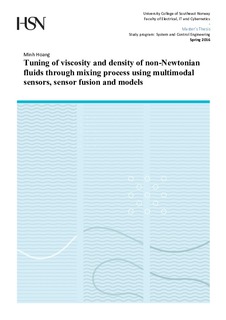| dc.description.abstract | The main work of this thesis was to develop some empirical models that could be used to estimate the viscosity in drilling operations. The reason for this is due to the fact that oil companies spends a lot of money to make sure that the drilling fluid has the right value of density and viscosity. It is important to control the density because its maintains the downhole pressure and wellbore stability. Likewise, it is crucial to maintain the viscosity of the drilling fluid at a desired level for transportation of drilling cuttings and hole cleaning.
In drilling operations, the viscosity in the drilling fluid changes for each circulation so the viscosity value need to be updated back to the reference value. This can be done by adding additives to the drilling fluid. To decide the amount of additives that is needed, viscosity blending mechanisms is used. The blending methods that can be used to mix drilling fluids will be discussed in Chapter 2. In this thesis, there has been developed some classifiers that will sort the viscosity into three regions; low viscous, medium viscous and high viscous. By using classifiers, it would be easier for the mud engineers to know which additive that needs to be added.
The different models that were used to estimate the viscosity in this thesis were Fuzzy Logic model, Feedforward Artificial Neural Network model (ANN), Feedback Artificial Neural Network model and Support Vector Regression (SVR). The performance analysis of these models were done using simulation study and experimental study. Based on the simulation study, Sugeno type-1 Fuzzy Logic model, feedforward ANN model and SVR gives very good estimations compared to the feedback ANN models. For the experimental study, the experiments were done in the Venturi-rig in University College of Southeast Norway, Porsgrunn. The experimental results were very similar to the simulation results, where the three models; Sugeno type-1 Fuzzy Logic, feedforward ANN and SVR had comparable predictions with some accuracy. Based on the analysis from simulation and experimental study, it seems that the empirical models that were developed is capable of estimating the viscosity of non-Newtonian drilling fluids.
In addition to the task description, I and my supervisors have also developed a Matlab toolbox “Dynamic Artificial Neural Network for Time Series Analysis and Prediction”. This toolbox was accepted as a paper for “The 9th Eurosim Congress on Modelling and Simulation-2016” in Finland. Apart from this, I as a co-author manage to get accepted a paper on flowrate measurement of non-Newtonian fluids in the same conference. | nb_NO |
